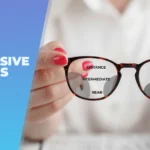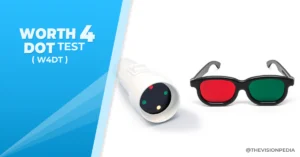|
Getting your Trinity Audio player ready...
|
Monocular vision is a vision where each of the eyeballs is utilized in separate ways in animals. Monocular vision in humans is a vision where only one eye is being used.
Monocular is the condition in which one eye is blind or unable to coordinate with the other eye.
Several common obstacles are associated with this type of impaired vision like ARMD, Cataracts, Diabetes, Retinopathy, and Glaucoma.
Signs and Symptoms of possible vision problems
- Severe sudden eye pain
- Recurrent pain in or around the eye
- Hazy, blurred, or double vision
- Seeing flashes of light or sudden brights
- Seeing ‘spider webs.’
- Seeing a curtain coming down over one eye
Monocular vision is found mainly in animals with eyes placed on opposite sides of their head, such as fish, rabbits, and birds of prey who have monocular vision.

What causes Monocular vision in humans?
There are various reasons why a person can develop sudden vision loss, including inflammation, vasculitis, trauma, and mechanical dysfunction.
The most common cause is ocular injuries. A severe case of visual damage may lead to permanent vision loss.
Adapting to Monocular vision
Adapting to monocular vision is very difficult at the start, but a person can adapt it slowly. Many monocular clues are helpful to adapting monocular vision, which is as follows.
Monocular Clues
1) Parallactic movement/Motion parallax:
Motion parallax occurs when an observer fixates on a point at an intermediate distance and rotates their head.
Objects in the space appear to move with head motion, while objects closer than the fixation plane appear to move against the rotation of the head.
2) Linear perspective:
It mimics how our eye sees, and it works on the principle of convergence where parallel lines that move away from us appear to converge or meet at a point.
We can also say in reverse the line coming towards us seem to diverge.
3) Overlay of contours:
By superimposing or interposing the shape of the configuration, one can find distance clues.
The interposition of objects gives a final clue as to their relative position since the outline of one object interrupts or hides the contour of another object behind it.
4) Size:
The size in which an object is seen is another crucial factor in judging distances, provided the actual size is known to the observer.
Things encountered in daily life, such as people and cars, allow a definite judgment of their distance.
However, if the actual size is unknown and a comparison with a known thing is impossible, marked errors occur. This may be the case.
For example, while looking at the bird in the sky. If its actual size is unknown to the observer, then the distance judgment is merely a guess.
The difficulty is undeniable at night if an attempt is made to estimate the distance of a light source of unknown size.
5) Distance from the horizon:
The object’s distance from the horizon or its relative height in the visual field gives a vital clue to distance.
6) Distribution of highlights, shadows, shade, and light:
Highlights and shadows provide a significant monocular clue for depth perception.
When there is a shadow on the lower position of an object, the object appears to stick out in space.
When the shadow is above, the thing seems to curve in.
Since sunlight comes from above, we have learned that the position of the shadow helps judge the rays and depressed area which is the relative depth in objects.
7) Aerial perspective:
The influence of the atmosphere on the contrast condition and colors of a more distant object is referred to as aerial perspective.
Things appear less clear and acquire a more bluish tinge as the viewing distance increases.
The color change toward blue is partially apparent if one views the shadows of a mountain chain from the same distance.
Practical tips to help you adjust monocular vision
When reaching for an object, open your hand wide and move slowly towards it until you feel the thing.
When pouring liquid, gently rest the tip of the container on the rim of the cup or glass to ensure you are in the correct position before you start to pour.
The disadvantage of monocular vision
- The person will have less visual acuity
- The person will have a small field of view
- Poor depth perception
- Poor contrast sensitivity
- Poor color perception








